Biography of Nur Inayat Khan
Noor Inayat Khan was born New Year’s Day 1914 in Moscow to Hazrat Inayat Khan an Indian Sufi mystic of royal lineage and his American wife, Ora Ray Baker, half-sister of Perry Baker, often credited with introducing yoga into America. On her father’s side, she was the great-great-great-granddaughter of Tipu Sultan, the celebrated Muslim ruler of Mysore, who in the 18th Century successfully fought the British, stemming their advance into South India. He was killed in battle in 1799.

As a child, she and her parents escaped the chaos of revolutionary Moscow in a carriage belonging to Tolstoy’s son. Raised in Paris in a mansion filled with her father’s students and devotees, Khan became a virtuoso of the harp and the veena (a plucked stringed instrument originating in ancient India), dressed in Western clothes, graduated from the Sorbonne and published a book of traditional Indian children’s stories – all before she was 25.

One year later, in May 1940, the Germans occupied Paris. Khan, her mother, and a younger brother and sister fled like millions of others, catching the last boat from Bordeaux to England, where she immediately joined British war effort.
In June 1941 she was assigned to RAF’s Bomber Training School, but she soon got bored of her desk work there, and anxious to fight at the front applied for a commission for field duty. Thus in late 1942 Khan was recruited into the F (France) Section of the Special Operations Executive (SOE, aka the Baker Street Irregulars), the Spy Agency created by Churchill with the mission to carry out sabotage and subversion behind enemy lines.
After completion of her three months basic SOE training, in early February 1943 she was posted to the Air Ministry, Directorate of Air Intelligence, seconded to First Aid Nursing Yeomanry (FANY) and sent to various other SOE schools for further training. At the end of these Training Ops, she was a secret “Agent in the Field,” though her official cover position was of an Assistant Section Officer seconded in the First Aid Women’s Yeomanry (FANY).
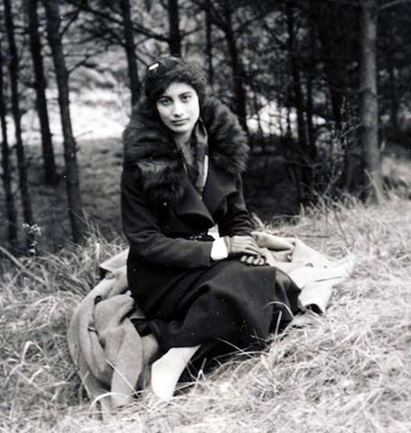
Nur Inayat Khan Was Selected to Work with the French Resistance as a Radio Operator
n June 1943 due to her fluency in both French and English, and her skills in Wireless Communications, she was selected to work with the French Resistance as a Radio Operator. Codenamed ‘Madeleine’, with a call sign of ‘Nurse’ and cover identity of Jeanne-Marie Regnier, Noor was parachuted into Nazi-occupied northern France during the night of June 16-17, the first woman spy to be sent into occupied France. From here she traveled to Paris with a Resistance member and together with two other SOE radio operators, Diana Rowden and Cecily Lefort joined the Physician Network (codenamed Prosper) led by Francis Suttill, a British Special Agent operating in France since Oct 1942. She was to become the communication link between Resistance and SOE in England at a time when the job of a Radio Operator in Nazi territories.
Her clandestine efforts supported the French Underground as England prepared for the D-Day invasions. Among SOE agents, wireless operators had the most dangerous job of all, because the occupation authorities were skilled at tracking their signals. The average survival time for a Resistance telegrapher in Paris was about six weeks.
But even before her arrival, the Prosper Network had been heavily infiltrated by the Gestapo and over six weeks of her arrival in France almost all the members of the Prosper Network, numbering in hundreds and her fellow SOE spy operators were arrested in Gestapo’s most successful coup against the Resistance in occupied France. It was later revealed that even Henri Dericourt, who received her in northern France was a double agent working for the Gestapo. After these arrests, Noor was advised by London to come back, but she refused as she was the last critical link between France and England, and continued her work behind enemy lines coordinating the airdrop of weapons and agents, and the rescue of downed Allied fliers.
Overnight thus the ‘Eposte-Madeleine’ became the most important link between French Resistance and the Allied Forces, and for a total of three and a half months, Noor carried out this extremely dangerous work. Moving from one hideout to another, changing her alias & appearance (dying her hair & changing hairstyles for instance) she managed to escape captivity while maintaining wireless communication with SOE. Noor used a dozen-odd apartment scattered around Paris as hideouts during this period, her complete fluency of French helping her pass through checkpoints and escape many other risky situations.
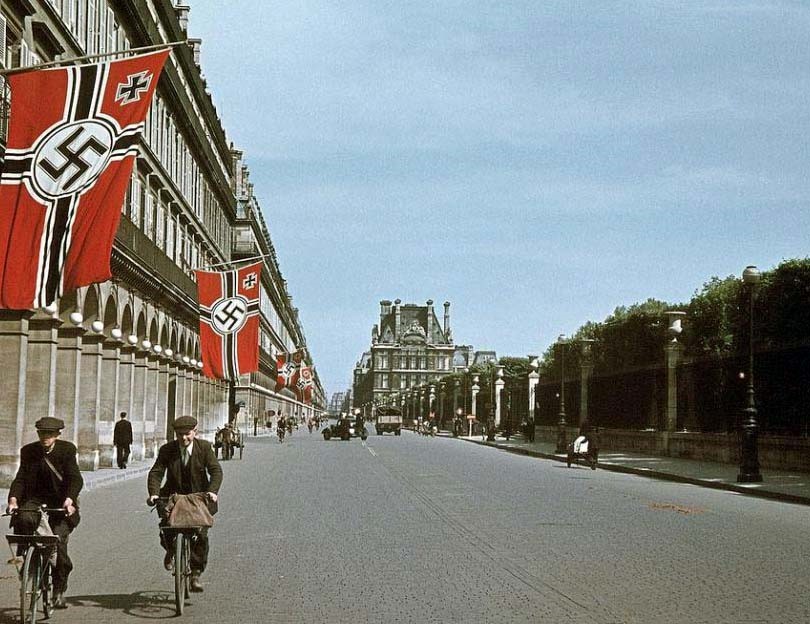
The Gestapo had her full description as well as her code name, but in spite of deploying considerable forces for the specific purpose they could not capture her, and she always managed to keep ahead of the Nazis, constantly carrying her Heavy 15 kg B Mark II Set (B2) Radio Set wherever she went.
She refused to abandon what had become the most important and dangerous post in France, although given the opportunity to return, she refused as she did not wish to leave her French comrades without communications and also hoped to rebuild her group.
In Oct 1943 she was betrayed for 100,000 French Francs by Renee Garry, the sister of the Lt. Emile Garry, leader of the Prosper Network’s Circuit Noor Inayat Khan was working with, who provided Gestapo with the address of the flat Noor was using at that time.
Jealously played a part in this betrayal, Renee settled for less than the Germans were willing to pay for this critical information. Khan was thus captured in this her flat by the German SD Security Service (Sicherheitsdienst, Intelligence Agency of SS and the Nazi Party), and held in their Headquarters in Paris. She had unwisely kept copies of all her secret signals and the Germans were able to use her radio to trick London into sending new agents – straight into the hands of the waiting Gestapo.
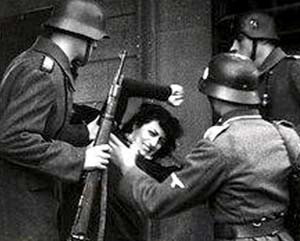
During interrogation, she fought so fiercely that SD officers became fearful of her, and she was treated as an extremely dangerous prisoner. In spite of rigorous interrogation by the Gestapo lasting a month, all the Germans could extract from her was false information, they couldn’t even get her to reveal her real name, leave aside any information on other spy operatives working in France. During this one month, she escaped captivity twice but due to bad luck (an ill-timed air raid alert once), she was captured in the vicinity on both occasions.
Noor was taken to Germany in late November 1943 “for safe custody” and imprisoned in complete secrecy at Pforzheim, southwest Germany in solitary confinement, as a Nacht und Nebel” (“Night and Fog”) prisoner. Classified as “highly dangerous,” she was handcuffed and shackled in chains most of her ten months. In spite of repeated beatings, starvation and torture by her Nazi captors, she refused to reveal any information.
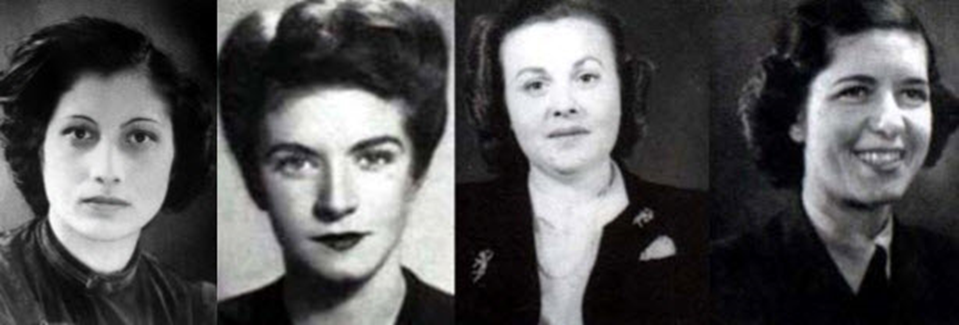
During the night of September 11, 1944, the Gestapo collected Noor Inayat Khan and three other SOE agents from Karlsruhe prison, Yolande Beekman, Eliane Plewman, and Madeleine Damerment, and drove them to Karlsruhe railway station in time to catch the early train to Munich. From there they caught a local train to Dachau and late in the evening walked to the infamous Dachau concentration camp arriving at about midnight. Between 8 am and 10 am the next morning, September 13, 1944, the four were removed from their cell, taken to a small courtyard, forced to kneel in pairs before being executed by a single shot to the head. Their bodies were immediately burned in the crematorium.
An anonymous Dutch prisoner, who emerged in 1958, contended that Noor Inayat Khan was cruelly beaten by a high-ranking SS-Obersturmfuehrer Friedrich Wilhelm Ruppert before being shot from behind; the beating may have been the actual cause of her death. She may also have been sexually assaulted while in custody. Her last word has been recorded as, “Liberte.” She was only 30-years-old.
Wilhelm Ruppert was tried for war crimes by the American occupying forces. He was subsequently convicted and executed by hanging on May 29, 1946.
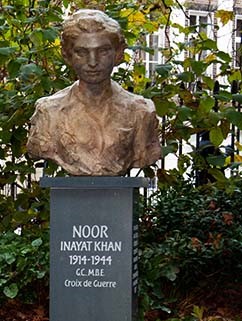
Noor Inayat Khan Became One of the Most Decorated Agents of the British S.O.E.
Noor Inayat Khan’s story is not only about the drama of fighting the Nazis -the brutality of the Gestapo, deception, betrayal, and escape -but also about the deep moral imperative that defined this young woman throughout her struggle who was raised with strong principles and believed in religious tolerance and non-violence.
Noor Inayat Khan became one of the most decorated agents of the British S.O.E. After the war, she was posthumously awarded the George Cross, the highest civilian medal given for bravery and sacrifice in Great Britain. The French awarded her the Croix de Guerre with Gold Star. In 2013, a memorial statue was erected in London’s Gordon Square.
A PBS one-hour docudrama about her life and adventures entitled “Enemy of the Reich: The Noor Inayat Khan Story” was first aired in September 2014.
Academy Award-winning actress Dame Helen Mirren narrates the film, which stars Indian American actress Grace Srinivasan as Khan. A copy of the DVD can be purchased from PBS at http://www.shoppbs.org/product/index.jsp?productId=45091586

A true patriot who faced the executioner, rather than giving up her brothers and sisters. First time I hear about her, and/or her exploits. It’s a must that I see the document. Great story.
A truly amazing story. I can only wonder how soon it will be before we need to recruit such as her, if there are such in this day and time.